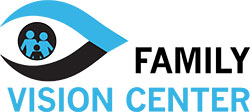It’s generally assumed that “20/20” is perfect vision, but what does this mean?
Visual acuity is the term used to describe the sharpness of your vision. When doctors do a visual acuity test, they have you view something (usually the Snellen eye chart of letters) from a standard distance and tell them what you see.
One of the lines on the typical eye chart has letters that are a size which has been deemed “20/20 visual acuity,” meaning that at 20 feet, most people can accurately read those characters. This is the standard, so at 20 feet, you read them as well as someone at 20 feet should be able to. It is possible for some people to read smaller letters that fall on lines below. This would be 20/15 or 20/10 visual acuity, meaning at 20 feet, you read letters that most people can only read at 10 or 15 feet. Great!
For people who have less visual acuity, they may be 20/40 or 20/60. The largest letter on the chart (an E on most Snellen charts) corresponds to 20/200 vision. If someone cannot distinguish that letter without assistance, they are considered legally blind.
Did you know the 20-foot measurement isn’t used everywhere? In some countries, they use 6 meters as the standard viewing distance.
Visual acuity of 20/20 is considered “perfect vision” because no aids are required to see better, but people can have better than 20/20 vision. Many young people are able to see letters smaller than the general “20/20” size. Even people who know that they see 20/20 or better, but feel that other aspects of their vision are lacking have options for improvement.
Some people who can pass a visual acuity test sufficiently may still have what we refer to as “high-order aberrations.” Low-order aberrations are familiar to most people as nearsightedness, farsightedness, and astigmatism, but high-order aberrations are less well-known. The eye doctor may find that you have coma, spherical aberration, or trefoil. These can produce symptoms including bad night vision, double vision, starbursts or halos, glare, or blurring.
Options exist for people with high-order aberrations who would like sharper vision. Gas permeable (GP) contact lenses are rigid lenses that may improve your vision better than glasses or soft contacts can. There are also laser vision correction surgeries that can address some eye irregularities leading to various types of eyesight problems.
Of course, if you want to know your visual acuity, a comprehensive eye exam is the best way to assess your vision. You can speak to the doctor about how well you’re seeing now, and what options are available to help you get 20/20 vision!

